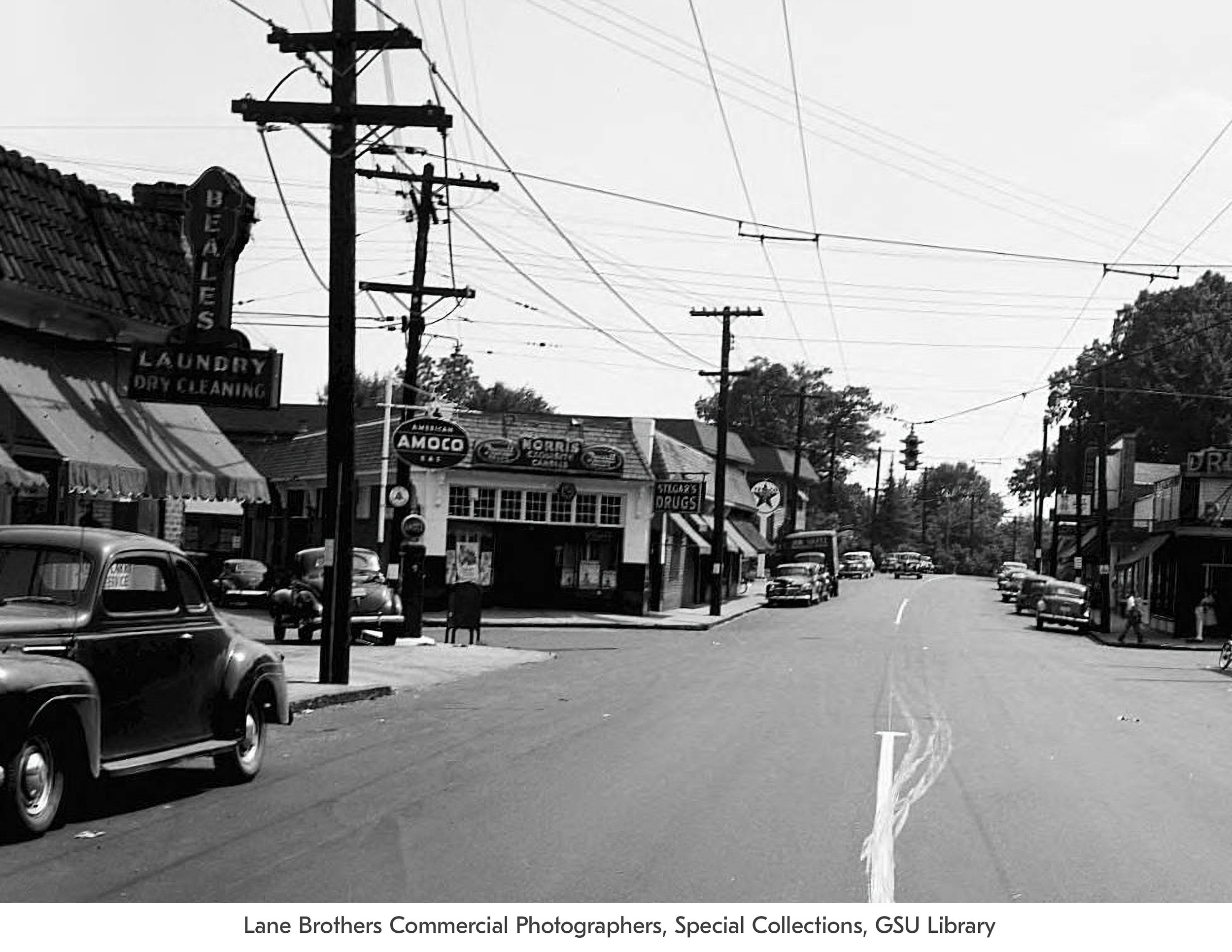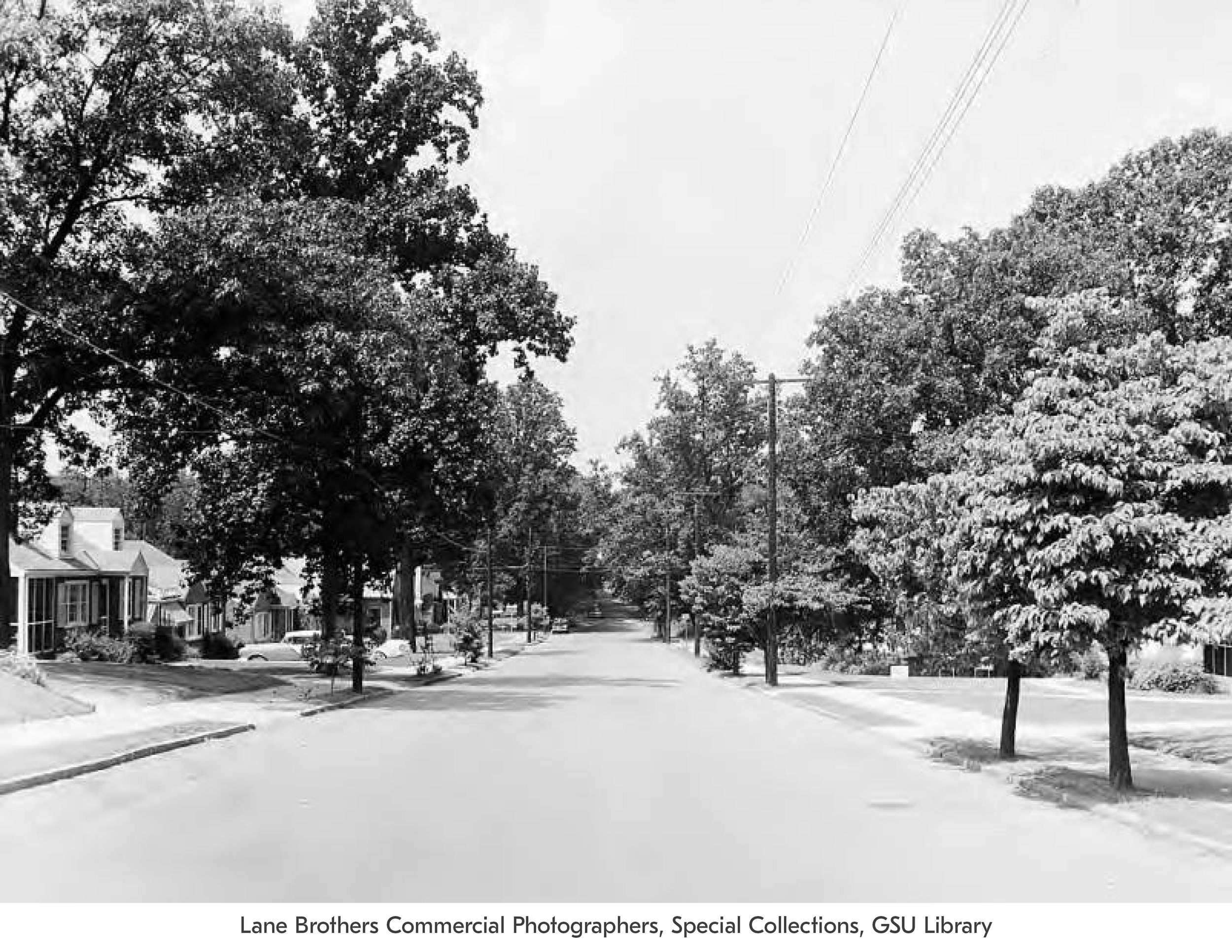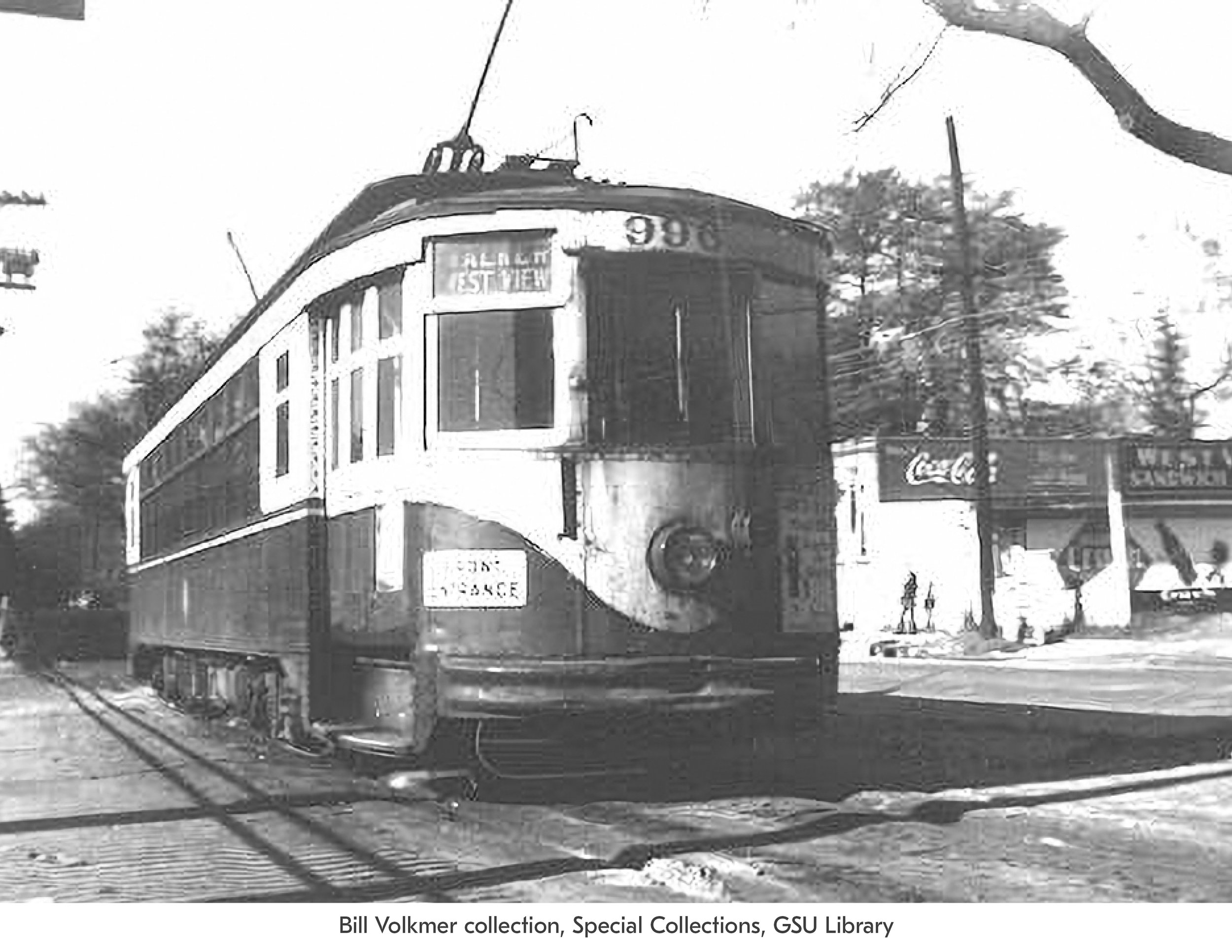bike ride: Historic Neighborhoods
Ashview Heights
The land around current-day Ashview Heights was originally owned by Native Americans.
Ashview Heights was initially known as Fairview Terrace. It was established in 1920 as one of the first communities designed for middle-class African Americans.
The community runs three miles from Washington Park to Lena Street and then south to University Avenue, where many historic African American communities exist.
Most of the housing stock was constructed between 1940 and 1960.
Washington High School was the first high school designed for African Americans in Atlanta, GA.
West of Ashby: Westend, Westview, and Mozley Park were considered spaces for whites. East of Ashby: Ashview Heights was considered a space for African Americans. African Americans migrated into the white sectors in 1919. Washington Park opened to African Americans, and Ashby Street school was converted to an African American School.
Heman Perry, an influential businessman, purchased 300 acres of land and created houses, many still in existence today.
References: https://www.ashviewheights.org/about/history
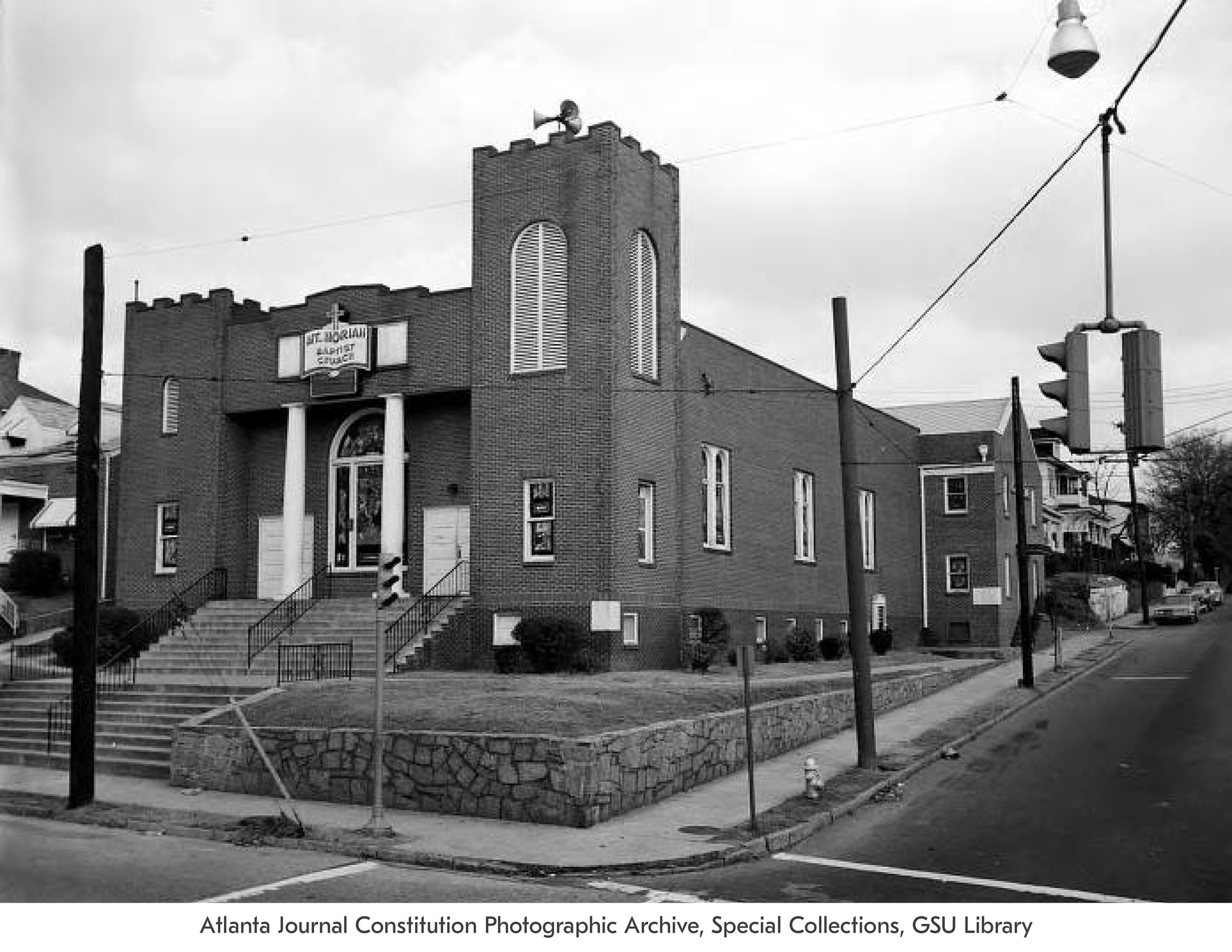
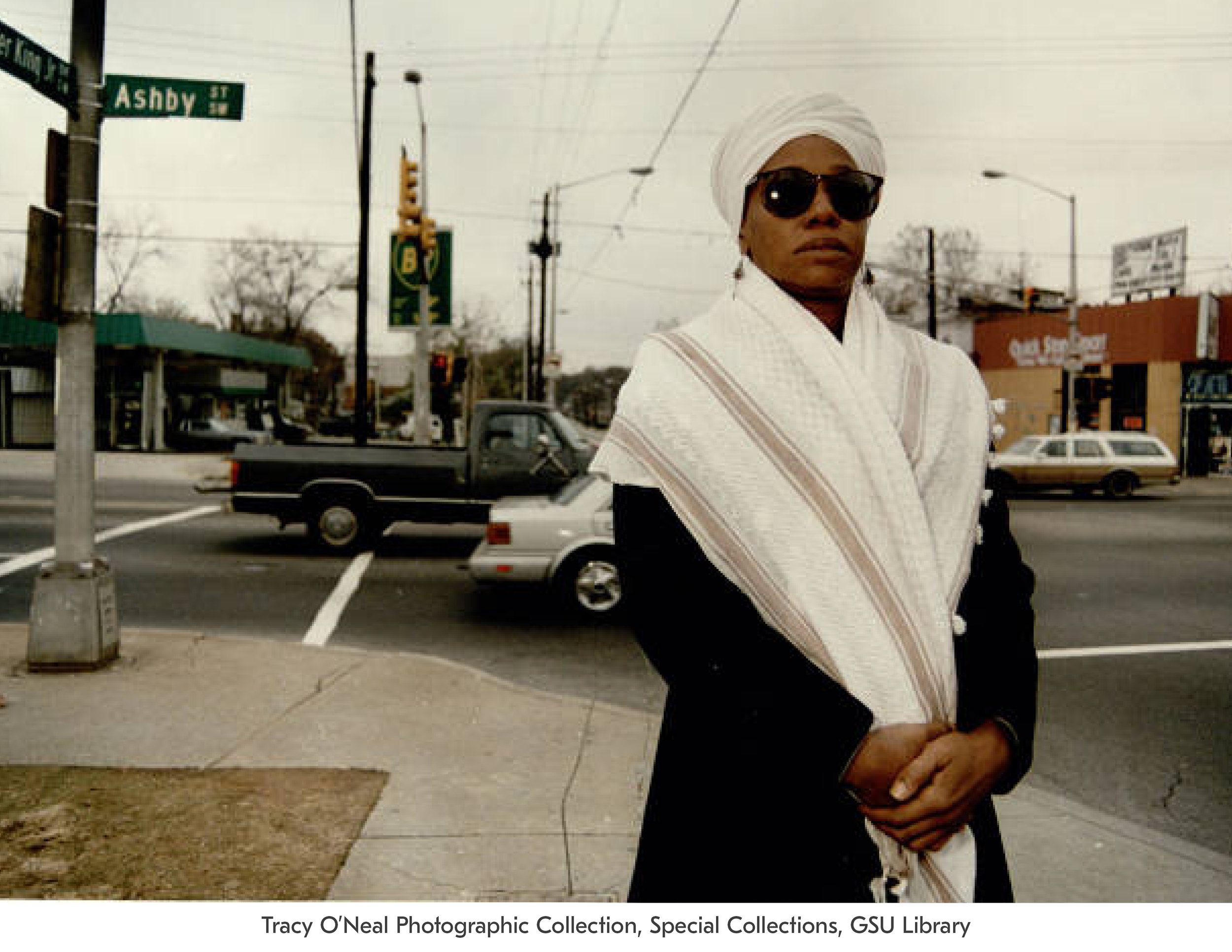
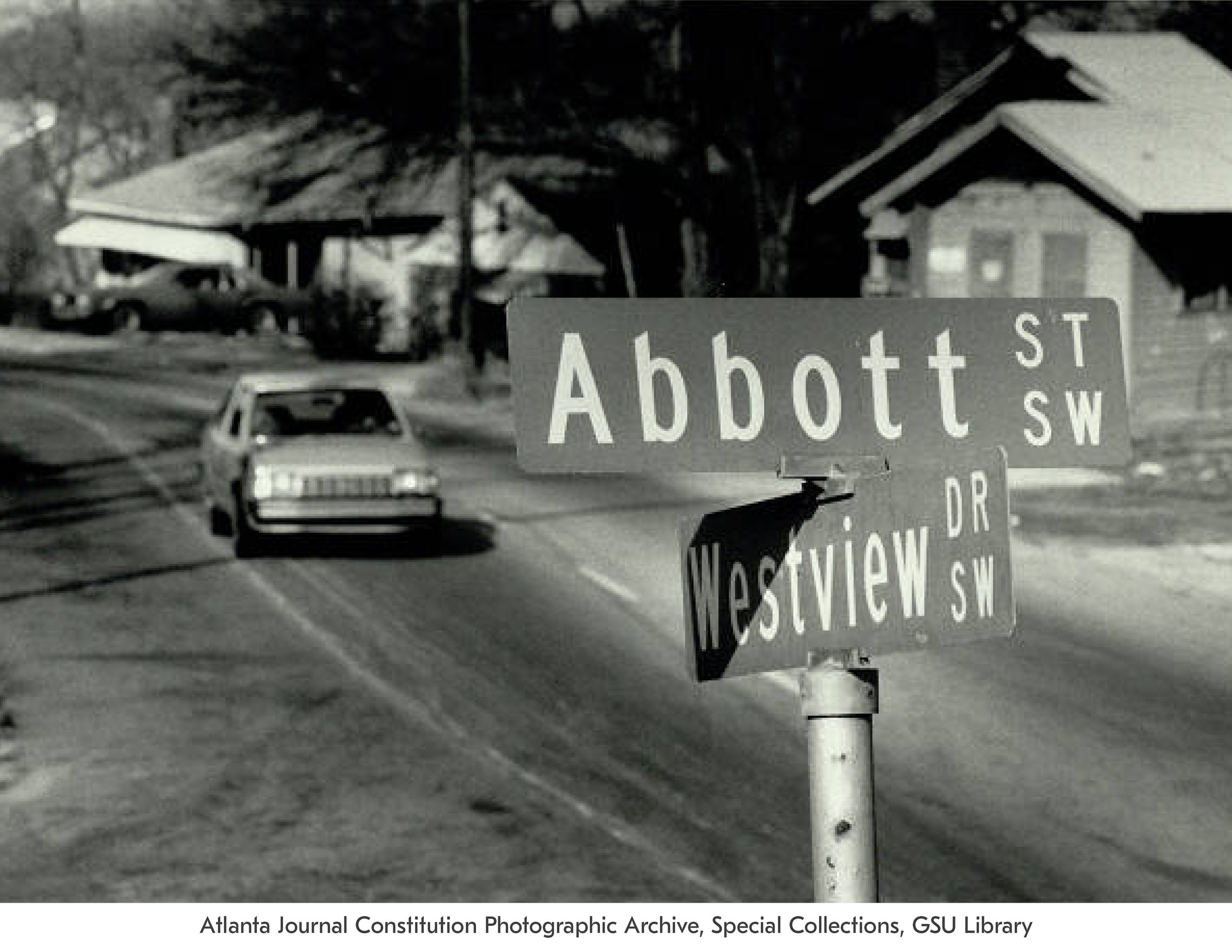
Mozley Park
Originally known, as Battie Hill, Dr. Hiram Mozley owned the land now known as the Mozley Park neighborhood.
A man of the south (a Confederate soldier), Dr. Mozley invented the Lemon Elixir, which he sold in drugstores. The elixir was considered a “Pleasant-Tasting Liver Laxative”.
In the early 1900s, upon Dr. Mozley’s passing, the land was left to his heirs. They subdivided it and developed a single-family residential community.
Beginning in 1920, Folk Victorian, Cottages, and Craftsman Bungalow homes were built.
In 1922, Mozley Park residents petitioned the city of Atlanta to purchase Old Mozley Estate to construct a recreational area. They stated it would be an excellent site for several car lines and a beautiful park.
In 1927, an elementary school was erected and was named after Georgia’s first Poet Laureate, Frank Stanton.
The park opened in the 1940s and soon became a place for high-profile events such as weddings and baptisms. The lake in the park hosted boating competitions much like the lake at Piedmont Park.
In 1949, Mozley Park was integrated when Rev. W. W. Weatherspool purchased a house on Mozley Place. Such a purchase was unheard of due to widespread and systemic racist practices, and ingrained racism, whites felt encroached upon thus white flight started in this area.
By 1960, after the I-20 interstate cut through, the area started to fall into despair.
By 1954, Mozley Park was designated as an African American residential and recreational park area.
By 1970 the City of Atlanta filled the lake and built a new swimming pool in Mozley Park.
References: https://www.friendsofmozleypark.org/history

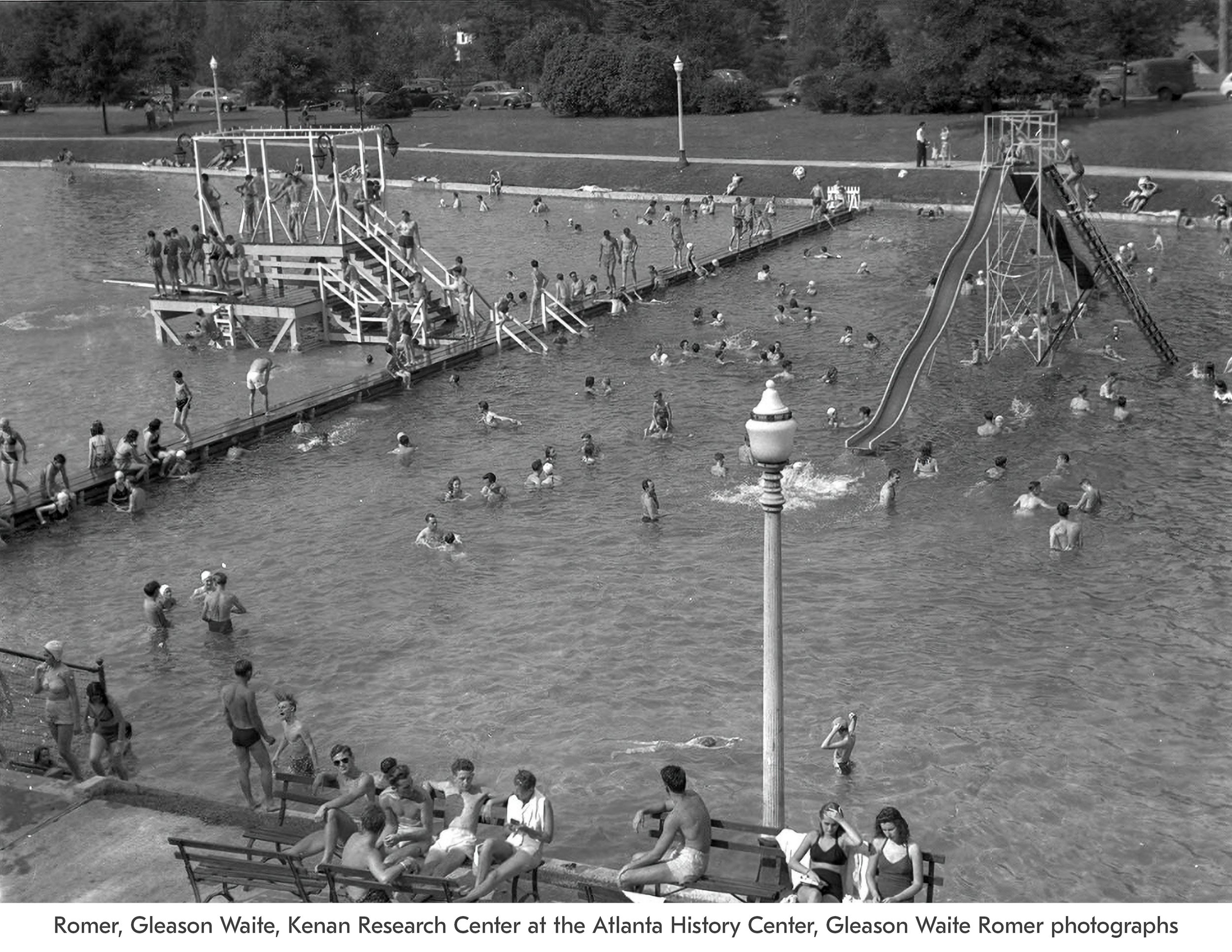

West End
Founded in 1835, West End was originally known as White Hall.
The West End community was established in 1840 by the Macon and Western Railroad. This railroad, later known as Central Georgia Railroad, was considered a paper railroad (exists on paper only) and provided easy access to downtown.
Real estate giants: George Adair, John Thrasher, and Thomas Alexander acquired land, thinking the area would grow, and it did.
In 1868, the community’s name was changed from White Hall to West End, after London’s trendy theater district.
In 1870, Adair and Richard Peters partnered to form the Atlanta Street Railway Company, providing access to Atlanta and West End. West End became known as one of the original streetcar suburbs with trains that ran along Gordon Street (Ralph David Abernathy), Porter Place (Lucile St), and Ashby Street (now Lowry Boulevard).
Because of this growth, the area also became a residential hub. Many of the homes you see today were built during this time.
Several distinguished businessmen lived in the West End neighborhood, including E.P. Howell (former Mayor of Atlanta and owner of the Atlanta Constitution), Frank L. Stanton (Poet Laureate), and Joel Chandler Harris (journalist).
Much of the beautiful housing stock that continues to stand is reflective of Craftsman bungalows, Queen Anne, and Folk Victorian.
By 1930, West End had a thriving business district on Gordon Street and Lee Street.
The area had branches of Sears, Goodyear, and Piggly Wiggly, and held approximately 22,000 residents.
By the mid-1950s, whites began to flee the area.
By the late 1950s and early 1960s, African Americans moved into the area. Nine African American students were permitted to segregated schools, one of which was Brown High School (Brown Middle School). In 1963, Brown graduated its first African American students. They were the first to graduate from a segregated school in Georgia.
Following the Civil Rights movement, white flight was in full effect, and by the late 1960s, West End was predominately African American.
By the end of the Civil Rights Movement, Dr. Ralph David Abernathy, with the efforts of West Hunter Baptist Street Church, purchased a white church, Gordon Baptist Church.
Around this time, St. Anthony’s Catholic Church had a shift in its congregation’s demographic, and the Shrine of the Black Madonna purchased the Gordon Street Theater.
By the 1980s, more renowned African Americans moved into the area, which increased the middle-black class. For example, Dr. Otis Hammond purchased the Hammond House. West End was known as a hub for African American culture.
By the late 1990s and early 2000s, the area began to decline. Many affluent African Americans left the area. As with other predominantly African American areas, mortgage fraud negatively affected homeowners.
References: https://atlantawestend.com › our-history
https://www.atlantaga.gov › urban-design-commission
https://www.wabe.org › west-end
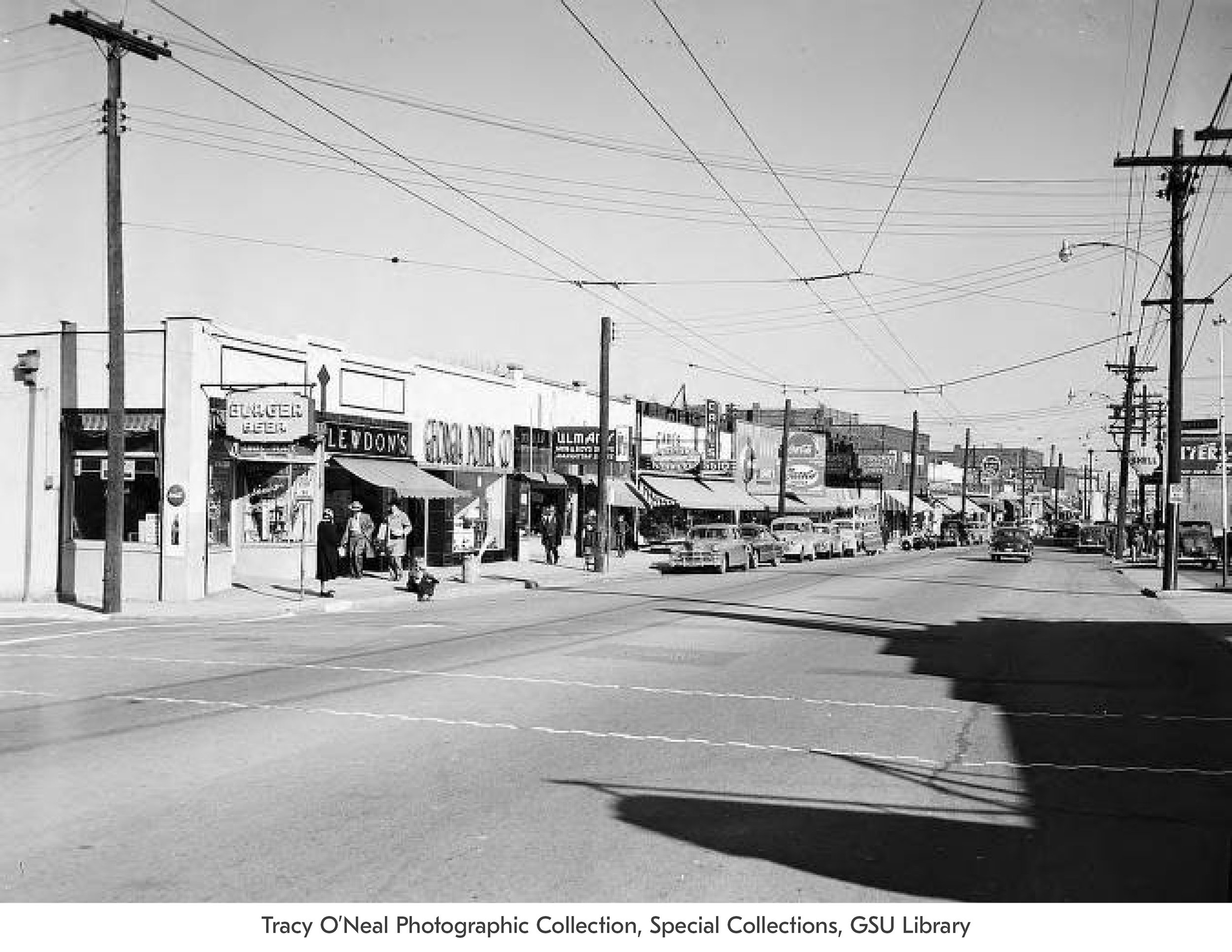
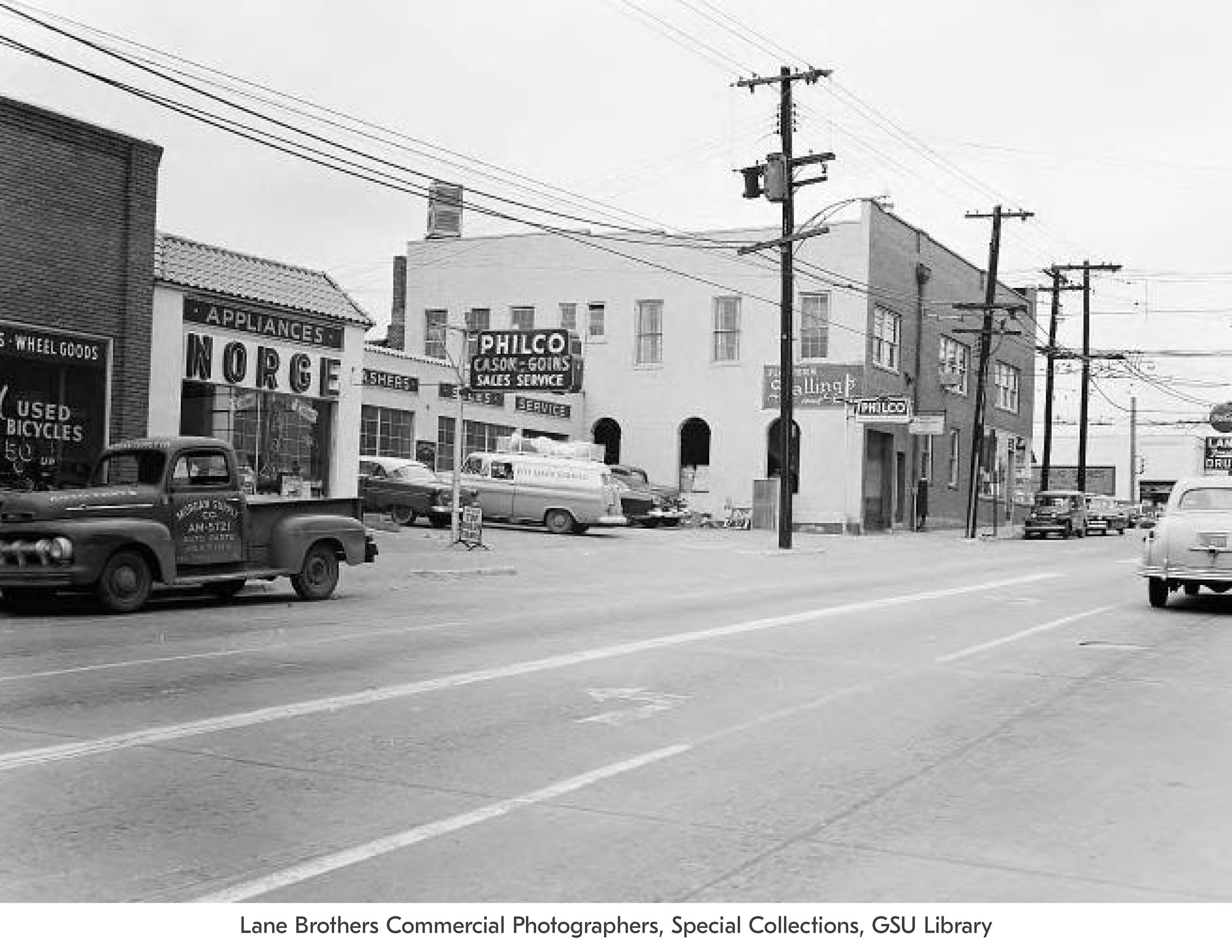
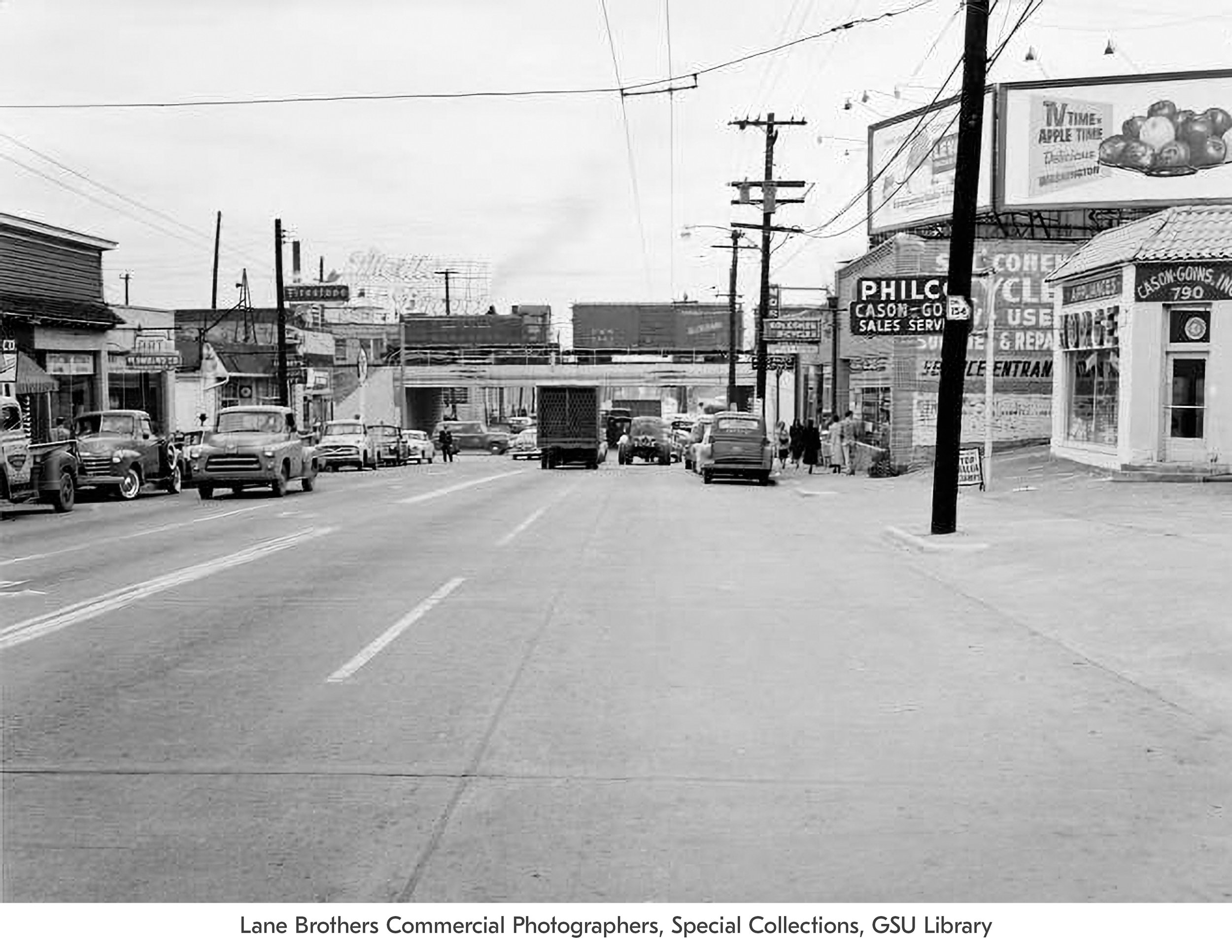
WESTVIEW
One of the first suburbs in Atlanta, Westview, was established from the purchase of 200 acres, which was originally planned to be a residence park known as Westwood Park. This plan never materialized, so it was sold and renamed Westend Park.
In 1910, the first part of Westend Park was annexed into the Atlanta City Limits and by 1950, the final part was annexed into the city limits. Because of its proximity to the Westview Cemetery, Westend Park’s name was changed to Westview.
The boarding streets of Westview are 1-20 and Derry Avenue to the north, Langhorn Street and Cascade Avenue to the east, Beecher Street to the South, and South Gordon Street and West, Ralph David Abernathy.
The Westview community is an example of an Atlanta Streetcar neighborhood. Streetcar neighborhood is defined as an area where streetcars traveled from surrounding areas to downtown Atlanta.
Westview is known for its Arts and Crafts bungalows, Four-Squares, Minimal Traditional, and Ranch-style homes.
As with West End, Westview was a white residential neighborhood.
“Redlining” was the law of the day. As it continued to prosper, Westview went from a grade A to a grade D because of the growing African Americans residential population.
By 1970, white flight transformed Westview into a predominately African American neighborhood.
Today, with the emergence of the Atlanta Beltline, Westview is becoming a popular area for those who desire in-town living.
References: http://www.westviewatlanta.com › about › history
https://www.westviewatlanta.org/about-westview
